Do you find it tricky to keep profitable in your HVAC work because prices vary? Knowing the best ways to set prices is key to a good profit. This guide will help you understand flat-rate HVAC pricing. It will show you different pricing methods and tips for setting the right service costs.
Looking at key parts like costs, salaries, and other businesses can improve how you price. Tools like ServiceTitan can make this all easier. They help you give exact prices in estimates and bills for all kinds of HVAC jobs.
Key Takeaways
- Understanding the importance of steady HVAC prices is crucial for profit.
- Comparing time and material costs to flat prices is valuable.
- Knowing about key pricing parts like costs, salaries, and other businesses is important.
- Learning how ServiceTitan can make pricing for HVAC work better.
- Make sure your prices match what’s usual in the field for a stronger profit.
What is HVAC Flat-Rate Pricing?
Looking into HVAC services? Understanding HVAC flat-rate pricing is key. This method means a set price for the work, not by how many hours or materials they use. It covers all costs from the start, making it simpler for everyone.
Flat-rate pricing brings you one big advantage. You’ll know the cost upfront, clear and plain. No guessing about time or materials means HVAC pricing transparency. You pay the agreed amount, avoiding any shocks later.
This pricing also helps workers be more efficient. They aim to finish jobs fast, not stretch them out. This boosts their productivity and helps them make more money. And, it’s fair because all expenses are already included in the price.
It also helps explain costs better to customers. With no hourly rates to complicate things, it’s easier to see the pricing clearly. It makes the whole process simple to understand for everyone.
If you’re a homeowner or a contractor, knowing about flat-rate pricing is crucial. It can lead to smoother, more open service experiences for all. So, it benefits both customers and workers a lot.
Advantages of Flat-Rate Pricing for HVAC Services
Using a flat rate for HVAC services has many benefits. It makes billing clear and easy to understand. This helps both customers and contractors know what to expect.
For Customers
Customers love knowing the cost up front. It means no more surprise bills. Understanding the price makes decisions easier. Plus, it builds trust with the service provider.
For Contractors
For contractors, flat rates boost efficiency. Technicians work hard to finish quickly but well. It also makes sales simpler, improving customer satisfaction. The system cuts down on paperwork and errors. And, it can lead to more work and more money.
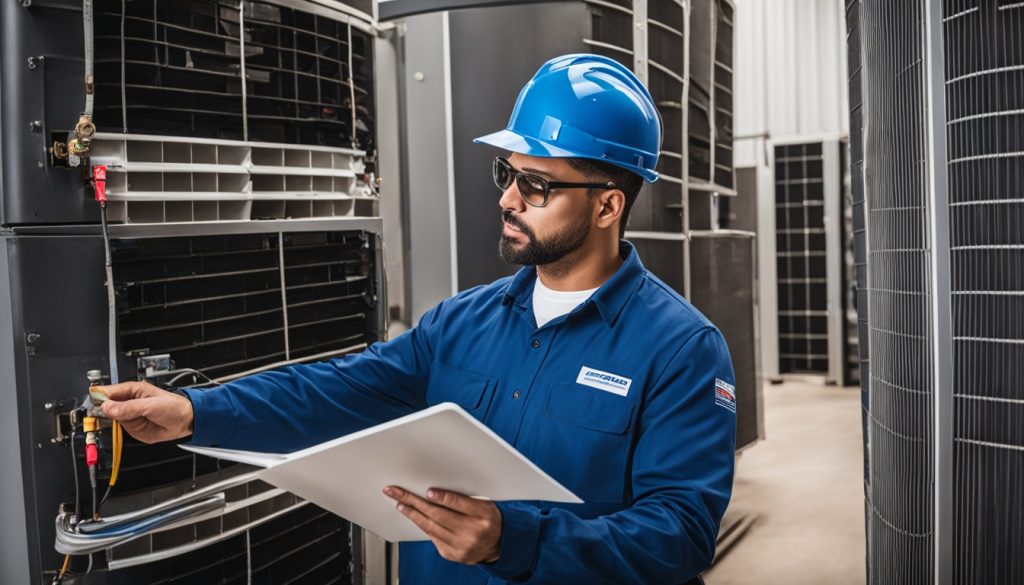
| Benefits | For Customers | For Contractors |
|---|---|---|
| No Surprise Costs | X | |
| Price Knowledge Upfront | X | |
| Reduced Service Call Pressure | X | |
| Incentivizes High Performance | X | |
| Simplifies Sales Process | X | |
| Decreases Billing Complexities | X | |
| Potential to Increase Profits | X |
Disadvantages of Flat-Rate Pricing
Though the flat-rate model has its upsides, it can have downsides for both customers and contractors. Knowing these limits is key in making smart choices, especially when comparing HVAC prices.
Customers might see flat-rate prices as too high. They might not like not seeing the full breakdown of costs. This leaves them feeling they’re overpaying. Not being able to haggle can make some folks unhappy. They’d rather pay what they think is fair, not a fixed price.
For contractors, flat-rate prices bring their own set of problems. Rates are set, no matter how tricky the job turns out to be. This might mean less money for harder jobs. Dealing with surprises could hit their profits hard. And, clients used to paying by the hour might not be happy with these prices. This can lead to friction and trouble in keeping customers happy.
Comparing Flat-Rate Pricing to Time & Materials Pricing
It’s important to know the difference between flat-rate and time & materials pricing in HVAC services. Both have their own good and bad points, which affect contractors and customers. Let’s explore the advantages and disadvantages of using flat-rate pricing. This will help you understand the costs better.
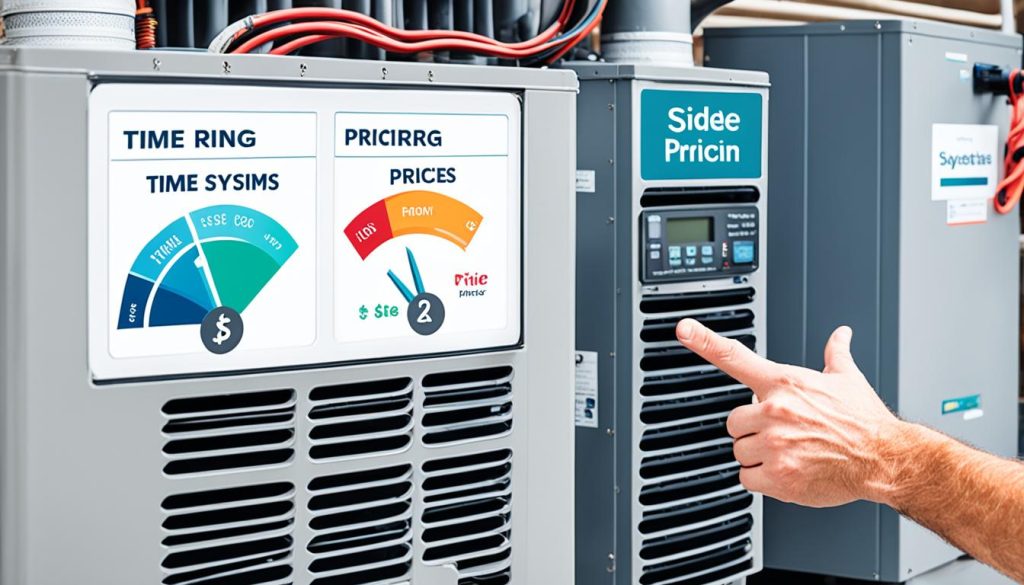
Pros of Flat-Rate Pricing
Flat-rate pricing has many good points. These things can make the experience better for everyone involved.
- Predictability in Costs: People like knowing the fixed prices of flat-rate pricing. It takes away any surprises and makes the costs clear.
- Efficiency Incentives: This type of pricing makes contractors work faster and better. This can mean more money for them and happier customers.
- Simplified Billing: Flat-rate pricing makes paying easier. It avoids the confusion that can come with other types of pricing. This saves time for everyone.
Cons of Flat-Rate Pricing
But, flat-rate pricing isn’t perfect. Some issues could affect how people see it.
- Perception of Overpricing: People might think flat-rate prices are too high. This is because they don’t see a breakdown of where the money goes.
- Reduced Flexibility: If you like negotiating prices, flat-rate pricing might not be for you. There’s not much room for changing the rates.
- Risk for Contractors: If a job takes longer than expected, contractors could make less money. They can’t charge extra for the extra time.
| Aspect | Flat-Rate Pricing | Time & Materials Pricing |
|---|---|---|
| Cost Predictability | High | Low |
| Efficiency Incentives | Yes | No |
| Risk of Overpricing | Potential | Lower |
| Flexibility in Billing | Low | High |
| Administrative Complexity | Simplified | Complex |
The Flat-Rate Pricing Formula
The flat-rate HVAC cost model is key for clear pricing. It helps contractors and customers alike. This approach looks at many parts to set a fair yet profitable price.
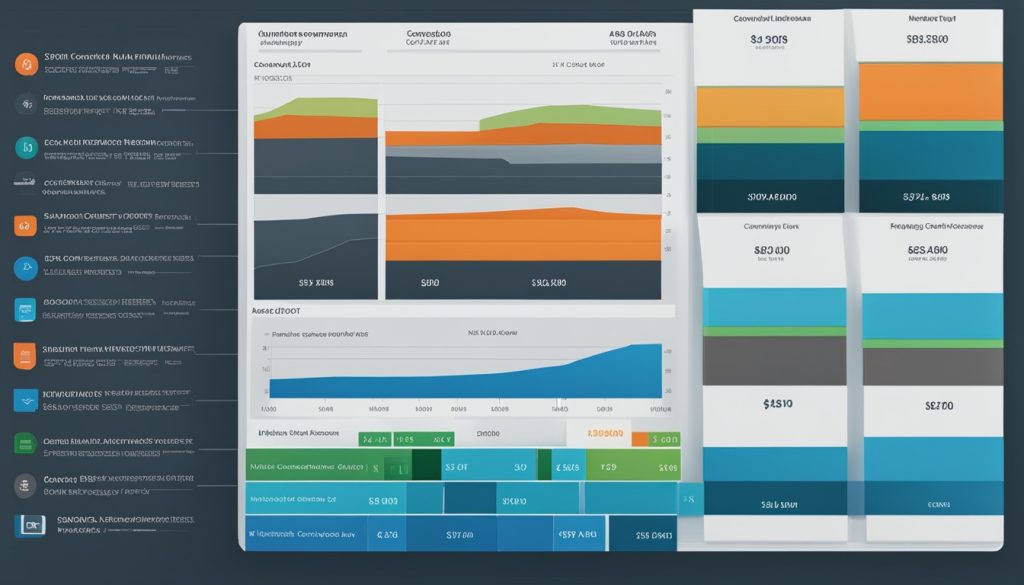
Direct Costs
In the flat-rate HVAC method, direct costs are the job time and parts used. The cost is clear and linked to the job. For the labor, they use (Hourly Rate x Repair Time) to know the full cost.
Indirect Costs
Indirect costs are also important. They include things like utilities and rent. These go into the price via a markup, ensuring all costs are covered clearly for the customer.
Challenges in Implementing Flat-Rate Pricing
Setting up flat-rate pricing in your HVAC company can be tough. You need to be really careful. One big challenge is figuring out how hard each job is. Also, you must keep up with the prices for parts and labor. If you don’t, you might charge too little or too much. This affects how happy your customers are.
It’s key to know what’s happening in the market to keep prices competitive. Keep an eye on market changes and what suppliers are charging. This way, your prices will fit what people are willing to pay. This keeps your pricing fair for both customers and your business.
Knowing the details of each job well is also important. This comes from knowing the industry and being experienced. It helps you set prices that your customers can trust. With the right prices, people know they’re paying a fair amount. They’ll feel good about your work.
Here are some best practices for handling these challenges:
- Keep your pricebook up to date with the newest costs and rates.
- Use software like ServiceTitan to make pricing easier and faster.
- Do regular research to know what’s going on in the market.
- Teach your team to understand job complexities and price them right.
Following these steps will make your flat-rate pricing system strong. With careful and up-to-date pricing, you can make your company more profitable. You’ll also keep your customers happy. By sticking to these best practices, your business will do well in a busy market.
Best Practices for HVAC Pricing Strategies
It’s important to set HVAC prices based on the value of your services. This leads to more profit without needing to match others’ prices. Let’s look at some top strategies:
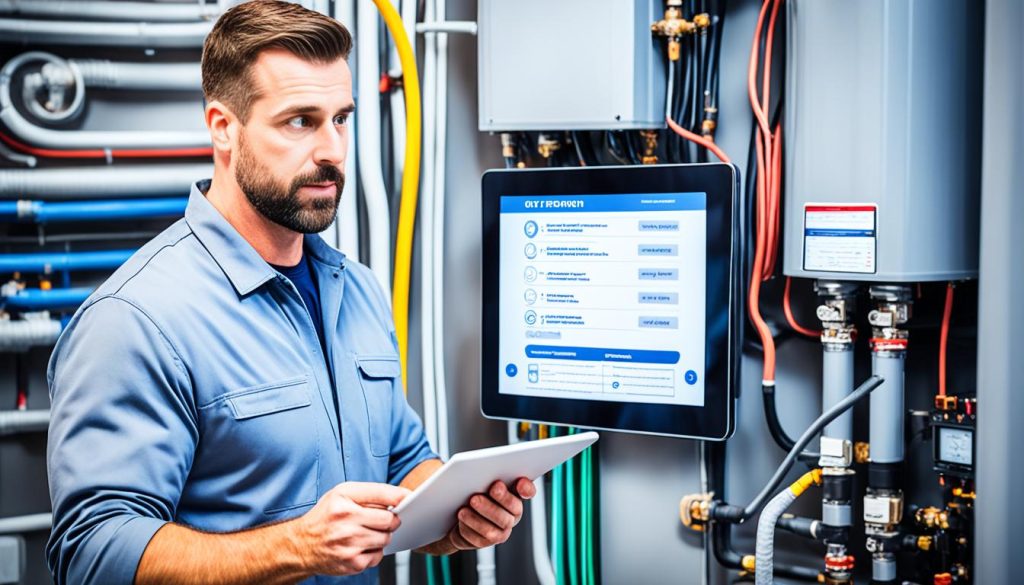
Start by looking very closely at all costs involved in your work. This means looking at the prices of doing the job and the expenses to run your business. Knowing these costs well lets you decide on fair prices that keep your business profitable.
Be clear with your customers. Tell them clearly what they will pay. This clear communication will help them trust you more. They will like and choose to work with you.
Using tools like ServiceTitan and FieldEdge can also make a big difference. These tools help make your pricing strategies work better. They make your pricing more accurate and faster. This makes your customers happier with their bills and improves your operation.
Keep an eye on the prices in the market, how much you pay your workers, and the cost of materials. Update your prices regularly to stay competitive. This keeps your prices fair and in line with what is happening now.
Following these steps will make your HVAC prices and your business better. You will make more money, keep your customers happy, and your business strong. This is a smart way to stay ahead and make your business last.
How Flat-Rate Pricing Ensures Customer Satisfaction
In the HVAC industry, customer satisfaction is key. Flat-rate pricing is a big part of making sure customers are happy. This kind of pricing is all about being clear and letting customers know what to expect before the work starts.
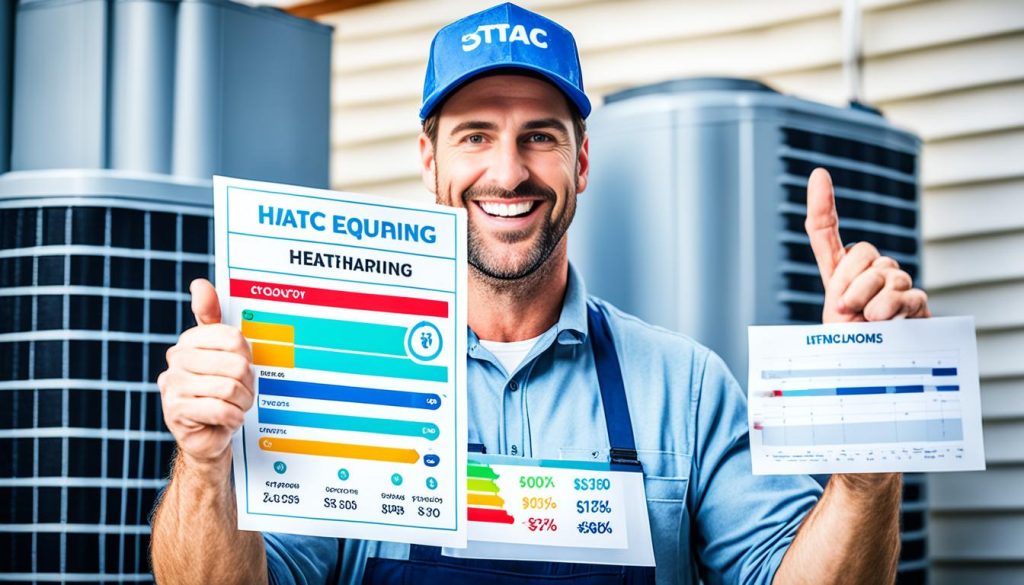
Predictability
With flat-rate pricing, customers can know the cost upfront. This makes budgeting easier and eliminates unexpected fees. Before any work begins, a clear price is given. This feature of flat-rate pricing takes away any guesswork.
This means customers can decide without surprises. They get to make choices based on what they know they’ll pay. That’s a big plus for them.
Transparency
When all costs are clearly laid out, trust grows. With flat-rate models, everything is explained. Customers see what they are paying for, beyond just the service itself. This makes them more satisfied and less likely to argue about costs.
If customers understand what to expect without hidden fees, they trust more. This often leads to them coming back or telling others about the good experience they had.
Here is a comparative look at traditional pricing and flat-rate benefits:
| Pricing Model | Predictability | Transparency |
|---|---|---|
| Hourly Pricing | Low | Medium |
| Flat-Rate Pricing | High | High |
This table shows the great things about flat-rate pricing. It points out how knowing the cost from the start and being clear about prices make a huge difference.
Conclusion
As we finish, it’s clear how HVAC flat-rate pricing changes your business. It meets today’s customer needs well. With flat-rate pricing, everyone knows the cost upfront. This makes customers and contractors happy. They know the price is fair.
The HVAC world keeps getting better with flat-rate pricing. It makes customers happy and makes businesses strong. ServiceTitan is a helpful tool for your pricing. It makes sure your costs are right and easy to understand.
Your aim is to give good and clear service in this fast world. Use the tips we talked about to join the flat-rate pricing trend. It will make customers love your service and help your business too.

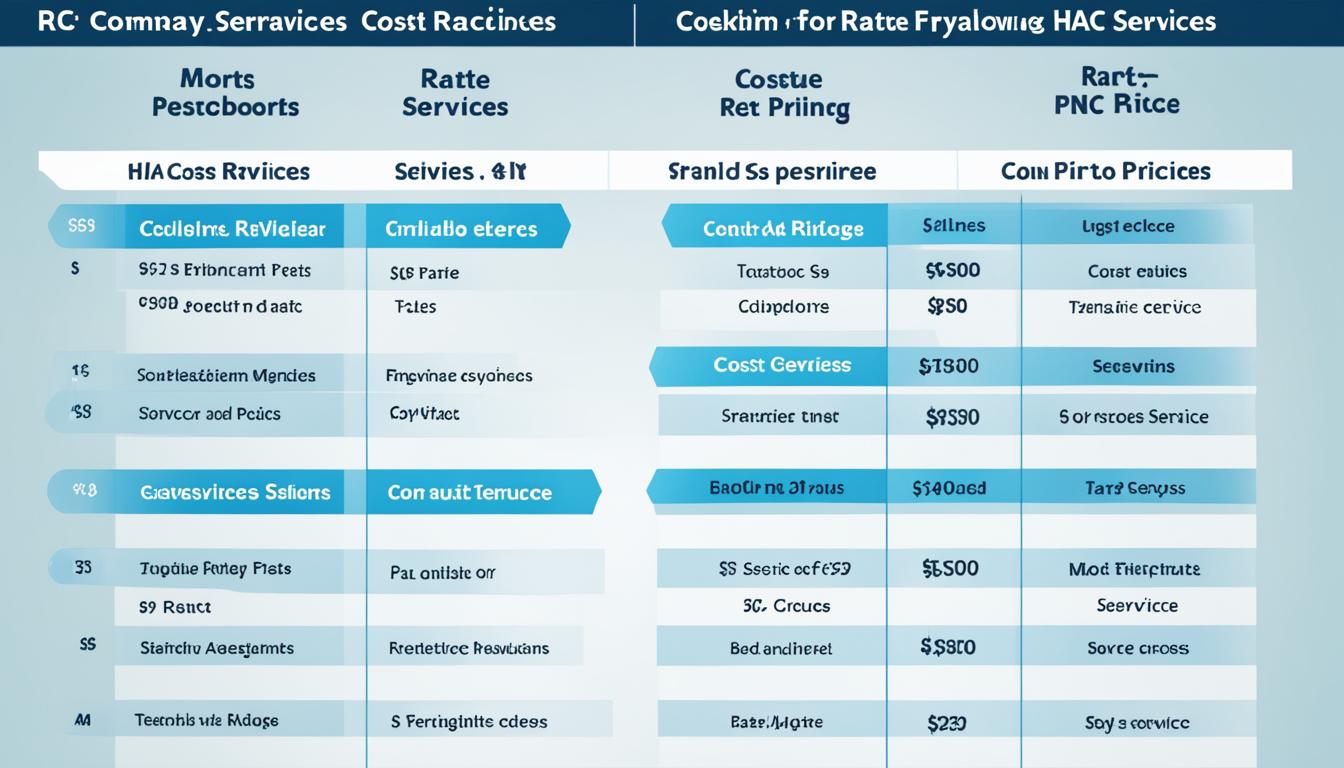



0 Comments